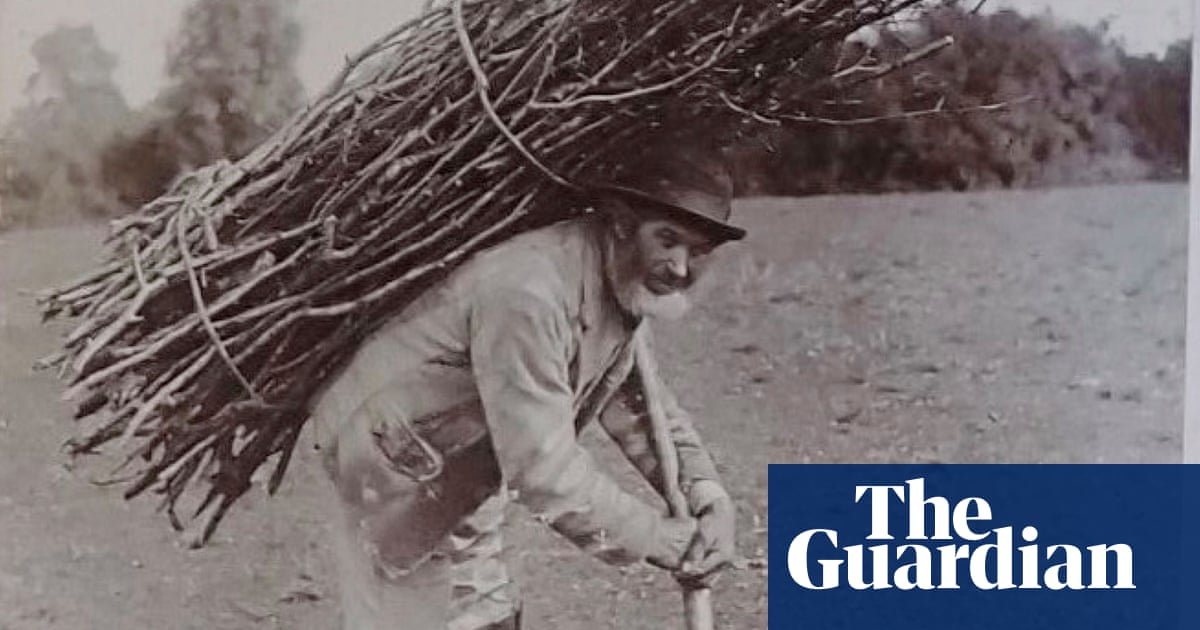
This image is instantly recognizable for fans of Led Zeppelin. It depicts a grey-bearded man bending over, his weathered hands holding onto a pole that supports a bundle of hazel on his back.
The source of the picture on the eye-catching front cover of Led Zeppelin IV has remained a mystery for over 50 years.
Recent findings have shown that the photograph is from the late Victorian era and depicts a thatcher from Wiltshire in black and white.
Brian Edwards, a visiting research fellow at the University of the West of England’s regional history centre, discovered the image in a photo album while conducting ongoing research following an exhibition he curated with the Wiltshire Museum in 2021.
Edwards’s research involved monitoring everyday sources that stimulate public engagement with Wiltshire’s past, from paintings and photographs to artefacts and memories. It was while following up on some early photographs of Stonehenge that he came across the one made famous by the English rock band.
Edwards expressed his hope that the discovery of this Victorian photograph will please and entertain Robert, Jimmy, and John Paul, who created the soundtrack that has been with him since his teenage years.
52 years ago, on November 8, 1971, Led Zeppelin IV was released and has since sold over 37 million copies globally. The album features one of the band’s most beloved tracks, Stairway to Heaven.
The cover art for the album did not include the band name or title. Instead, it featured a framed, colorful image of a hunched man, resembling a painting, attached to the wall of a partially destroyed suburban house. The back cover showed a block of flats, believed to be Salisbury Tower in Ladywood, Birmingham.
Robert Plant, the lead singer of Led Zeppelin, reportedly found a framed, colored photo of the original Wiltshire thatcher image in an antique shop near guitarist Jimmy Page’s home in Pangbourne, Berkshire.
The original photograph was found in a photo album from the Victorian era called “Reminiscences of a visit to Shaftesbury. Whitsuntide 1892. A present to Auntie from Ernest.” It featured over 100 images of buildings and streets, as well as some portraits of rural workers from Wiltshire, Dorset, and Somerset.
The photographer captioned the picture of the hunched man as “A Wiltshire thatcher.” Additional investigation indicates that the thatcher is Lot Long (also known as Longyear), who was born in Mere in 1823 and passed away in 1893. During the time the photo was captured, Long was a widower residing in a modest cottage on Shaftesbury Road in Mere.
Additionally, a portion of the signature on the album appears to be a match for the handwriting of Ernest Howard Farmer (1856-1944), who was the initial leader of the photography program at what was then known as Regent Street Polytechnic and is now a division of the University of Westminster.
The photo of the farmer is currently on display at Wiltshire Museum in Devizes. The museum plans to showcase the image, along with other photographs captured in the western region of England during the Victorian era, in a exhibition scheduled for spring 2024.
According to David Dawson, the director of Wiltshire Museum, the exhibit “Wiltshire Thatcher: a photographic journey through Victorian Wessex” will honor Ernest Farmer’s contributions to the development of photography as an artistic medium. Despite his current lack of recognition, Farmer was a prominent figure in this field.
“The exhibition will showcase Farmer’s ability to capture the essence of the people, villages, and landscapes of Wiltshire and Dorset, which provided a stark contrast to his life in London. It is intriguing to observe how Led Zeppelin further explored this theme of rural and urban differences and incorporated it into their iconic album cover, 70 years after Farmer’s work.”
Source: theguardian.com


